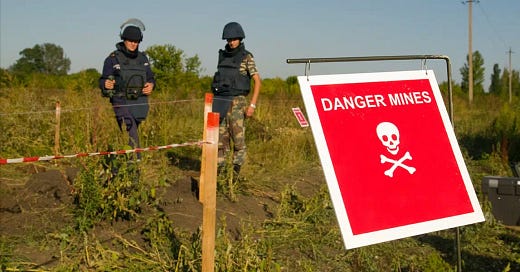10 Leadership Landmines: How to Detect and Avoid an Explosion
BOOM!
Have you ever stepped on a “landmine” as a leader?
You didn’t see it coming. It wasn’t obvious. That’s a landmine for you.
But you accidentally stepped on it, and an explosion ensued. You survived. Well, sort of. You sense things have changed. It feels obvious your leadership is undermined.
How Landmines Undermine Leadership
Leadership is influence. Anything that works against or undermines influence reduces your ability to lead.
This is the problem with landmines. When a leader stumbles upon one, the explosion damages the leader, and the shrapnel harms the team. The real damage is with trust.
Trust is the foundation of everything (and I mean everything). Trust determines a leader’s influence. When people trust their leader, the team functions well. People trust each other and believe in the leader. Trust grows leadership influence.
On the other side, when trust erodes, influence wanes. Trust takes time to build but only takes moments to destroy.
This is the real problem with leadership landmines. When a leader stumbles upon one, the explosion dings the leader. After all, the leader stepped on mine and created the explosion. The team catches shrapnel and loses influence.
Avoiding Leadership Landmines
It’s not easy. Landmines, by nature, are buried and hidden from sight. The only way to avoid a leadership landmine is to detect them before triggering them.
I’ve stepped on enough landmines to know how the explosion feels. My errors have also taught me how to detect them. Here are 10 landmines every leader should avoid:
1. Communication Breakdown
Misunderstandings or a lack of clear communication lead to issues. Effective leaders ensure clear, open, and honest communication. Clear communication should be easy, yet finding an organization that doesn’t struggle with it is rare.
People desire and deserve clarity. Poor communications lead to misaligned efforts, destroying trust and harming effectiveness. To communicate clearly, do these things:
Send meeting agendas in advance.
Send follow-up emails after every meeting or conversation, outlining what was discussed and the tasks, expectations, and responsibilities assigned.
Carve out a segment of time at your weekly or bi-monthly staff meetings to share information.
Over-communicate changes to systems, processes, or expectations.
2. Lack of Flexibility
Rigid decision-making or failure to adapt to changing circumstances can explode your team. Leaders must make decisions, yet no leader can ensure that every decision is the correct decision. Setting a direction is essential for your team, and it is equally important to adjust as circumstances change.
NOTE: Make sure you reread number 1 if a change in direction is made!
3. Failing to Delegate
No leader is talented enough to do everything that must be done. Trying to do everything leads to burnout and reduces team morale. Not to mention, refusing to delegate stagnates the growth of your followers.
I’ve written extensively about delegation. If you struggle with this, here’s a post that may help.
4. Ignoring Team Morale
Not recognizing or addressing the team’s needs and morale can lead to a toxic work environment.
Your team isn’t a collection of Human Resources but a group of human beings. How we feel directly affects how we perform. It’s a leader’s job to asses team morale and work to resolve tensions, even when this means removing a team member.
Keep reading with a 7-day free trial
Subscribe to Gavin’s Substack to keep reading this post and get 7 days of free access to the full post archives.




